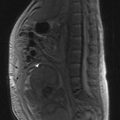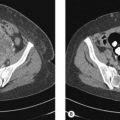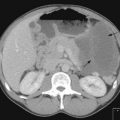20 Human immunodeficiency virus (HIV) related malignancies
Introduction
Malignancies have a significant impact on the morbidity and mortality of people with human immunodeficiency virus (HIV) infection. 30–40% of HIV-infected patients develop malignancies during the course of their illness. Some of the malignancies are AIDS-defining conditions whereas others appear to be more common in HIV patients (Box 20.1). Although AIDS-defining malignancies may be caused mainly by progressive immunosuppression, the exact relationship between immunosuppression and non-AIDS-defining malignancies is yet to be established. The most common cancers in the general population such as breast, prostate and colon do not appear to increase in HIV infection.
Pathogenesis
AIDS-defining malignancies
Kaposi’s sarcoma
The clinical manifestation of KS varies from a mild to a fulminant course. Skin lesions appear mainly on the lower extremities, face and genitalia. Skin lesions are typically multifocal and papular (Figure 20.1
Stay updated, free articles. Join our Telegram channel

Full access? Get Clinical Tree








